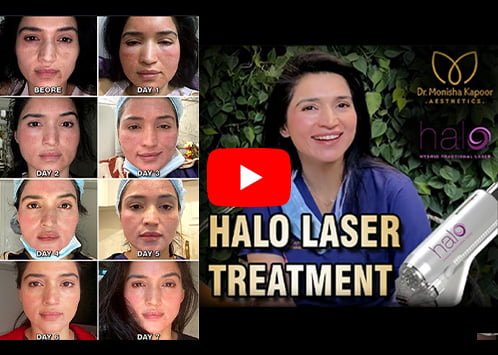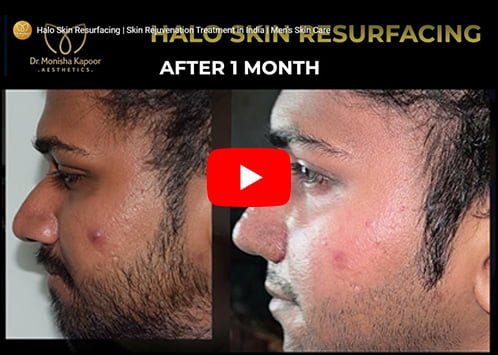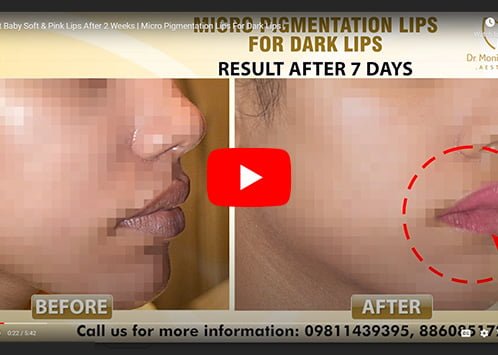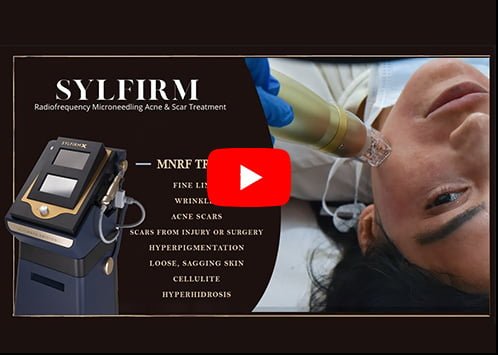What is Permanent
make-up?
Permanent makeup, also known as cosmetic tattooing or micropigmentation, is a cosmetic procedure that involves implanting pigments into the skin to enhance or mimic natural features. The pigments are typically implanted using a tattoo machine, although some methods use a manual hand-held tool or a rotary device.
Permanent makeup can be used to enhance eyebrows, eyeliner, lip liner, and even create the illusion of natural-looking areolas after breast reconstruction surgery. It is also used to camouflage scars or other imperfections on the skin. Unlike traditional tattoos, which are designed to be permanent, the pigments used in permanent makeup fade over time due to natural skin exfoliation and exposure to the sun. Touch-up treatments are often required every 1-3 years to maintain the desired results.
Before undergoing permanent makeup, it’s important to do your research and find a licensed and experienced practitioner, like Dr Monisha Kapoor, who uses safe and sterile equipment and follows proper hygiene and sanitation protocols.

When performed by a licensed and experienced practitioner who follows proper hygiene and safety protocols, permanent makeup is generally considered safe. However, like any cosmetic procedure, there are some risks involved. The most common risks associated with permanent makeup include allergic reactions to the pigments, infection, scarring, and dissatisfaction with the final results. In some cases, the pigments may migrate or change color over time, leading to an undesirable appearance.
To minimize these risks, it’s important to choose a licensed and experienced practitioner, like Dr Monisha Kapoor, who uses sterile equipment, follows proper hygiene protocols, and performs a patch test before the procedure to check for allergic reactions. You should also ensure that the practitioner uses high-quality pigments that are safe and FDA-approved.
If you have a history of skin conditions or allergies, or if you are pregnant or breastfeeding, you should consult with your doctor before undergoing permanent makeup. It’s also important to carefully follow the aftercare instructions provided by the practitioner to minimize the risk of complications.
In summary, permanent makeup is generally safe when performed by a licensed and experienced practitioner who follows proper hygiene and safety protocols. However, like any cosmetic procedure, there are some risks involved, and it’s important to do your research and choose a reputable practitioner to minimize these risks.
The downtime of permanent makeup can vary depending on the individual and the area of the face or body where the procedure was performed. In general, there may be some redness, swelling, and mild discomfort immediately following the procedure, which typically lasts for a few hours to a few days.
The treated area may also feel tender and itchy as it heals, which can last for several days to a week or more. During the healing process, the pigment will appear darker than the final result, and some flaking or scabbing may occur as the skin heals.
In most cases, you can return to your normal activities immediately following the procedure, although it's important to avoid sun exposure, swimming, and other activities that may cause sweating or irritation to the treated area for a few days. It’s important to follow the aftercare instructions provided by your practitioner to ensure proper healing and to minimize the risk of complications.
You may be advised to avoid applying makeup or skincare products to the treated area for a period of time, and to keep the area clean and dry to promote healing. Overall, the downtime of permanent makeup is usually minimal, and most people are able to resume their normal activities within a few days to a week after the procedure.






